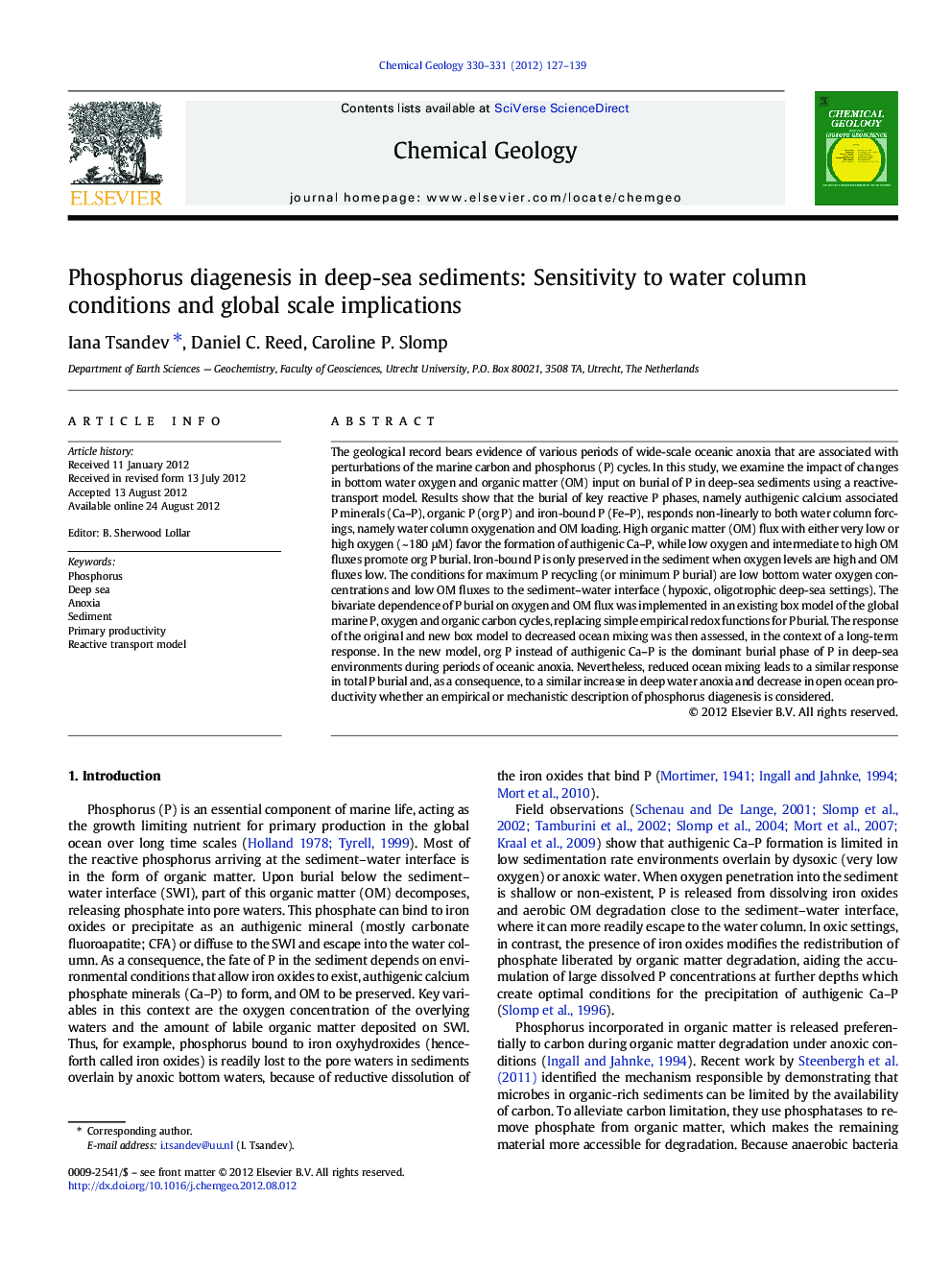| Article ID | Journal | Published Year | Pages | File Type |
|---|---|---|---|---|
| 4699241 | Chemical Geology | 2012 | 13 Pages |
The geological record bears evidence of various periods of wide-scale oceanic anoxia that are associated with perturbations of the marine carbon and phosphorus (P) cycles. In this study, we examine the impact of changes in bottom water oxygen and organic matter (OM) input on burial of P in deep-sea sediments using a reactive-transport model. Results show that the burial of key reactive P phases, namely authigenic calcium associated P minerals (Ca–P), organic P (org P) and iron-bound P (Fe–P), responds non-linearly to both water column forcings, namely water column oxygenation and OM loading. High organic matter (OM) flux with either very low or high oxygen (~ 180 μM) favor the formation of authigenic Ca–P, while low oxygen and intermediate to high OM fluxes promote org P burial. Iron-bound P is only preserved in the sediment when oxygen levels are high and OM fluxes low. The conditions for maximum P recycling (or minimum P burial) are low bottom water oxygen concentrations and low OM fluxes to the sediment–water interface (hypoxic, oligotrophic deep-sea settings). The bivariate dependence of P burial on oxygen and OM flux was implemented in an existing box model of the global marine P, oxygen and organic carbon cycles, replacing simple empirical redox functions for P burial. The response of the original and new box model to decreased ocean mixing was then assessed, in the context of a long-term response. In the new model, org P instead of authigenic Ca–P is the dominant burial phase of P in deep-sea environments during periods of oceanic anoxia. Nevertheless, reduced ocean mixing leads to a similar response in total P burial and, as a consequence, to a similar increase in deep water anoxia and decrease in open ocean productivity whether an empirical or mechanistic description of phosphorus diagenesis is considered.
► P burial in deep-sea sediments responds non-linearly to bottom water conditions. ► High organic matter and low or high oxygen favor the formation of authigenic P. ► Low oxygen and intermediate organic matter favor organic P preservation. ► Hypoxic oligotrophic deep-sea settings are optimal for P recycling from sediments.
